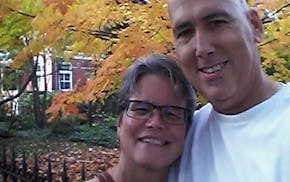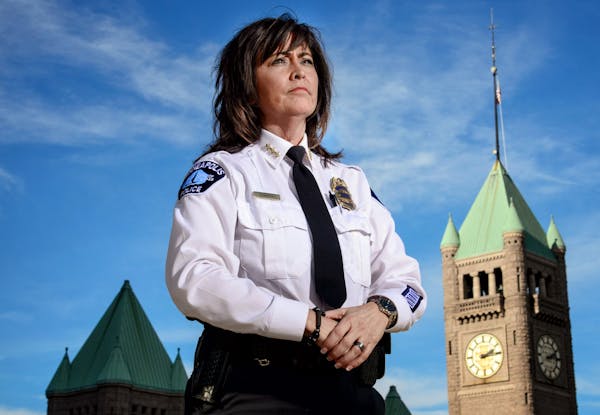When Carter Averbeck first moved into the Warehouse District of Minneapolis 15 years ago, he expected the drunks and chuckleheads. There were music venues, topless bars and the glowing neon of Sex World. So, he wasn't one of those nettlesome people who move downtown and then complain about the noise, lights and traffic.
"I knew the area would be filled with parties, but I could handle that," said Averbeck. "But there didn't seem to be the same level of angst and fear, drug dealing and guns. This summer was the worst on record. Now, I'm used to hearing gun shots two to three times a week. When I come home after dark, I have to brace myself for what might happen."
He's not alone. Violent crime in downtown has spiked 12 percent so far this year compared with the same period last year, with serious assaults up 24 percent. Homicides citywide number 39 through Nov. 2, with a decent chance to hit the mythical 50, which used to trigger a Minneapolis gun shop owner to start selling "Murderapolis" T-shirts. In Averbeck's neighborhood alone, robbery has risen from 306 to 333.
So I asked him how excited he was to hear of Minneapolis Police Chief Janeé Harteau's "holistic" plan to address rising violent crime, which she described in Tuesday's newspaper as "institutionalizing things that are in the program. We started from the inside out: procedural justice, internally and externally, community engagement work, the internal review with the Office of Justice Programs."
"What in the world does that even mean?" said Averbeck. "Are they going to walk around with goats and do yoga classes in the middle of the streets?"
Increasingly, it seems as if everyone in City Hall has taken courses at the University of Obfuscation. When a couple of City Council members questioned how some vague, small budget items were actually going to be implemented last week, an aide from the mayor's office offered some jabberwocky to the effect that folks will partner with "key lead agencies" and be "leveraging our existing partners as we move outwardly. It is something that is in line with a national initiative."
What I really want to know is whether the paradigms are shifting exponentially, because that's where the rubber hits the road.
Ironically — if gunplay can be ironic outside of a "Fargo" episode — the MPD was planning to hold a news conference to address downtown crime, but it was interrupted by shootings in other parts of the city. Sorry, but our discussion on violence has been rudely postponed by violence.
Unfortunately, the bad guys are not yet aware of any of the department's trending slogans: MPD 2.0, "Commitment. Integrity. Transparency." And finally, "holistic."
Maybe the MPD's recently hired on-staff "journalist" (sorry, if you work for the government, you are not a journalist, regardless of your background) can start from the inside out and leverage some existing partners and ask people to quit shooting people.
When Harteau presented data a while back showing the upswing in violent crime, she was reportedly praised for lowering the rates of larceny and burglary. And then, despite rumors that she would not be asked to return, she was rehired.
It is unfair to place rising crime solely at the feet of Harteau, however. In 2009, when homicides hit a low of 19, a different mayor and a different chief were preparing to hold a news conference to discuss the positive news. I wrote a column warning them that claiming credit politically was a slippery slope, and that they had better be prepared to take the blame when crime surged again. I quoted several homicide detectives from the Murderapolis days who believed the numbers were cyclical and depended a lot on which bad guys were in jail and which were on the street. And it also was dependent on how many officers were on the street, something that has been a solvable problem in Minneapolis.
The news conference to talk about the city's safe streets back in 2009 was replaced by one to discuss a triple homicide. Life in the big city, a reality that quickly trumps public relations.
Averbeck, for one, can sympathize with police.
Earlier this year, he was walking from his car to his home when one guy stumbling toward him lunged for a bag he was carrying. Another drunken man began a fight with the attacker that spilled into the street, blocking traffic.
"There was a police officer 20 feet away in a car," said Averbeck, who walked over and knocked on the police car window, pleading with the officer to do something.
"Instead of getting out of his car, he called it in," Averbeck said. "There seems to be a 180-degree difference with police from proactive to reactive. There used to be a lot of officers on the beat; now it seems like they are just there, waiting for calls. I think they are overwhelmed."
jtevlin@startribune.com • 612-673-1702
Follow Jon on Twitter: @jontevlin

Tevlin: 'Against all odds, I survived a career in journalism'

Tevlin: Grateful Frogtown couple fight their way back from fire and illness




